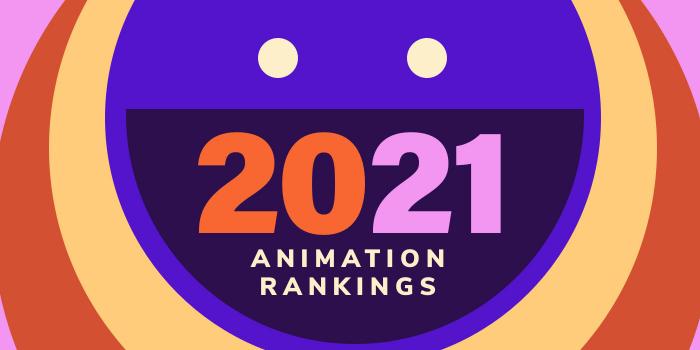
What are the top private animation schools of 2021?
| Ranking | School | State | % |
|---|---|---|---|
| 1 | California Institute of the Arts | California | Top 2% |
| 2 | Ringling College of Art and Design | Florida | Top 3% |
| 3 | Savannah College of Art and Design | Georgia | Top 4% |
| 4 | University of Southern California | California | Top 5% |
| 5 | School of Visual Arts | New York | Top 6% |
| 6 | Rhode Island School of Design | Rhode Island | Top 7% |
| 7 | Pratt Institute | New York | Top 8% |
| 8 | Gnomon School of Visual Effects | California | Top 9% |
| 9 | New York University | New York | Top 10% |
| 10 | Full Sail University | Florida | Top 15% |
| 11 | Rochester Institute of Technology | New York | Top 15% |
| 12 | Brigham Young University | Utah | Top 15% |
| 13 | Academy of Art University | California | Top 15% |
| 14 | ArtCenter College of Design | California | Top 15% |
| 15 | California College of the Arts | California | Top 20% |
| 16 | Carnegie Mellon University | Pennsylvania | Top 20% |
| 17 | School of the Art Institute of Chicago | Illinois | Top 20% |
| 18 | Otis College of Art and Design | California | Top 20% |
| 19 | DigiPen Institute of Technology | Washington | Top 20% |
| 20 | DePaul University | Illinois | Top 25% |
| 21 | Maryland Institute College of Art | Maryland | Top 25% |
| 22 | Loyola Marymount University | California | Top 25% |
| 23 | Columbia College Chicago | Illinois | Top 25% |
| 24 | University of Pennsylvania | Pennsylvania | Top 30% |
| 25 | Laguna College of Art and Design | California | Top 30% |
| 26 | Rocky Mountain College of Art and Design | Colorado | Top 30% |
| 27 | Minneapolis College of Art and Design | Minnesota | Top 30% |
| 28 | College for Creative Studies | Michigan | Top 30% |
| 29 | Columbus College of Art and Design | Ohio | Top 35% |
| 30 | University of the Arts | Pennsylvania | Top 35% |
| 31 | The Digital Animation & Visual Effects School | Florida | Top 35% |
| 32 | Drexel University | Pennsylvania | Top 35% |
| 33 | The New School/Parsons | New York | Top 35% |
| 34 | Chapman University | California | Top 40% |
| 35 | Woodbury University | California | Top 40% |
| 36 | Kansas City Art Institute | Missouri | Top 40% |
| 37 | Cleveland Institute of Art | Ohio | Top 40% |
| 38 | Cogswell University of Silicon Valley | California | Top 40% |
| 39 | Pacific Northwest College of Art | Oregon | Top 45% |
| 40 | Emerson College | Massachusetts | Top 45% |
Our 2021 list -our tenth annual- of the Top 40 Private Animation School Programs in the US. For an explanation of ranking criteria, click here.

California Institute of the Arts (CalArts) opened its doors in 1970. Formed by Walt and Roy Disney as a multidisciplinary community of artists, the school, which offers programs in art, design, film, music, theater, and dance, became the nation's first postsecondary institution to offer graduate and undergraduate degrees in both the visual and performing arts.
Serving just over 1,500 students, CalArts provides more than 70 degree programs, including the unique Doctor of Musical Arts (DMA). Programs are administered within six schools including the School of Critical Studies, The Sharon Disney Lund School of Dance, the School of Art, the School of Film/Video, The Herb Alpert School of Music, and the School of Theater.
The animation program is housed in the School of Film/Video—the largest school at CalArts. Programs options include a BFA in Character Animation, and BFA and MFA degrees in Experimental Animation. The BFA in Character Animation is an “intensive” four-year program, that “provides comprehensive artistic and technical training to help each student develop as a fully-fledged animation artist within both the traditional and computer graphic (CG) animation environments,” says the school.
Courses for the program are taught by “a faculty of experienced professionals who work at the forefront of traditional, CG and independent animation.”
Course highlights include 2D Character Animation, CG Foundation, Digital Methods, and Film Workshop. During the final year of the BFA program, students have the opportunity to customize their curriculum according to their own areas of specific interest. Graduates of the program will enter the job market with a professional-caliber portfolio and four short individually made films.
The BFA Track in the Experimental Animation program “emphasizes the creative development of a personal aesthetic in an interdisciplinary, artist-centered environment.” Courses for the program “blend practical knowledge with creative practice and critique, allowing for a detailed examination of animation art.” Course highlights include Animation Production, BFA Workshop, Hybrid Imaging, and Motion and Meaning.
The MFA is a three-year program that encourages students to “seek out poetic, lyrical, structural and other modes of experimentation with the materials and forms of the moving image. Students are trained to become makers, as well as “critically minded contributors to the advancement of animation history and theory.” Courses such as Post-Production Sound for Experimental Animators and The Digital Path for Animation are part of the program, as well as Experimental Animation Thesis Production. Graduates will leave the program with two film projects.
Throughout both the BFA and MFA programs, students will work closely with a mentor to achieve their academic and professional goals.
CalArts has produced hundreds of successful alumni including Brad Bird (The Incredibles, Ratatouille, Mission: Impossible – Ghost Protocol), Chris Buck (Frozen), John Lasseter (Toy Story, Cars), Mark Andrews (Brave), Stephen Hillenburg (creator of SpongeBob SquarePants), and Tim Burton (Beetlejuice, Edward Scissorhands, Ed Wood), to name a few.
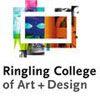
Ringling College of Art and Design (RCAD) was founded in 1931 by Dr. Ludd M. Spivey, president of Southern College (now Florida Southern College) and circus baron, John Ringling. When it opened, the school had just 75 students and 111 course offerings. Today, RCAD serves more than 1,600 students from 45 states, 60 countries, Washington D.C., and Puerto Rico.
This private, not-for-profit college offers BFA degrees in eleven disciplines and BA degrees in two. Students in all programs benefit from RCAD’s “rigorous curriculum” that the school says “employs the studio model of teaching and immediately engages students through a comprehensive program that is both specific to the major of study and focused on the liberal arts.” Students also benefit from visiting artists from major studios such as DreamWorks and Blue Sky Studios, focused internship opportunities, and the chance to work with local businesses on real-world projects.
Program options for aspiring animators include BFA degrees in Computer Animation and Motion Design.
Established in 1990, the BFA in Computer Animation teaches students to “create characters and tell their stories, as well as design, paint, model, texture, animate, light, composite, and edit original films.” Students will combine these technical skills with “conceptually original ideas that affect an audience emotionally, visually, and intellectually.”
Major courses account for 40% of the program curriculum and open electives account for 10%, allowing students to hone their skills in an additional area of interest. Course highlights include 3D Design for Computer Animation, Story Development, Traditional Animation, and Visual Development for Computer Animation.
RCAD graduates have won Emmys, ADDYs, Oscars, and Guggenheim Fellowships, and they have been hired at top creative companies such as Disney, DreamWorks, Google, LinkedIn, Pixar, and many others.
The Motion Design Department at Ringling is recognized as a Houdini Certified School. This 3D procedural animation software is used for motion design, visual effects, game development, and virtual reality. Students in the BFA in Motion Design will master Houdini as well as Cinema 4D, (3D computer animation software), NUKE (compositing and visual effects software), Adobe After Effects (2D computer animation software), Dragon Frame (stop-motion animation software), and the Adobe Creative Suite. They will also study 2D Design, Animation (levels I-IV), Concept Development, and Drawing. Students will complete a senior project, engage with guest speakers from companies such as Nickelodeon and NBC Universal, and have the opportunity to complete an internship at places such as Leo Burnett, Showtime, Spacejunk, Troika Studio, and Viacom.
Motion Design alumni have started their careers in companies and studios such as Apple, Digital Domain, Disney, Google, Marvel, Nickelodeon, SnapChat, and many others.
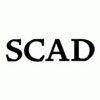
Savannah College of Art and Design (SCAD) was founded in 1978. What began in a renovated armory, serving as the first classroom and administration building, has grown into a multi-campus art college with locations in Savannah and Atlanta, Georgia, and Lacoste, France. The school, which serves more than 15,000 students from all 50 states and more than 100 countries, offers 40+ majors and over 75 minors—more degree programs and specializations than any other art and design college.
The School of Digital Media at SCAD has six program options for aspiring animators including a BFA in Animation (Atlanta, Savannah), an MA in Animation (Savannah, eLearning), an MFA in Animation (Atlanta, Savannah, eLearning), and Minors in Animation, Animated Illustration and Publication Design, and Concept Design for Animation and Games. Minor options consist of 25 credit hours of study, and they are offered at the Atlanta and Savannah campuses.
The BFA in Animation consists of 180 credit hours of study, including 80 in the major. Students may choose from four concentrations including 2D Animation, 3D Character Animation, Storytelling and Concept Development, and Technical Animation. Ten hours of additional electives allows students to create a focus in another area of interest.
Students will master 2D and 3D Animation, Character Animation, Digital Modeling, Drawing, Storyboarding, and more. Through Gradpath@SCAD, incoming BFA students will have the opportunity to earn their undergraduate degree and a graduate degree in an accelerated and continuous program of study. The BFA/MA takes as few as four years to complete and the BFA/MFA can be completed in as few as five years.
The MA is a 45 credit hour program that consists of courses such as 3D Cartoon Character Animation, Computer-Generated Modeling and Design, and Environment Look Development. Students in the program will complete a Collaborative Project and the Final Animation MA Project, which “provides students the opportunity to synthesize their learning into a cohesive project piece,” says the school. Students will “propose, develop and execute a project that is then cut into their reel.”
The MFA requires 90 credit hours of study, with many of the same courses as the MA program. Additional courses include titles such as Media Theory and Application, and Storyboarding and Previsualization. MFA students will also complete three thesis courses: Animation MFA Thesis Exploration and Research, Animation MFA Thesis Visual Component Production, and Animation MFA Thesis Completion. A Graduate Internship is also part of the program.
Graduates of SCAD’s animation programs have landed positions at major studios such as Cartoon Network, Nickelodeon, Pixar, and Walt Disney Animation Studios.

Established in 1880, University of Southern California (USC) is a private research university that houses the USC Dana and Dornsife College of Letters, Arts and Sciences, along with 22 academic schools and units. The school, which opened with just 53 students and 10 teachers, now serves 46,000 students and 4,000 full-time faculty. In addition to the Los Angeles campus, USC has programs and centers in Marina Del Rey, Orange County, Sacramento, Washington, D.C., Catalina Island, Alhambra, and around Southern California.
More than 200 undergraduate programs and over 400 graduate and professional programs are offered, including several for aspiring animators. The John C. Hench Division of Animation + Digital Arts offers a BA, BFA, MFA and a Minor that encourage collaborations across the School of Cinematic Arts and with students from Thornton School of Music, the Kaufman School of Dance, the School of Dramatic Arts, the Viterbi School of Engineering, and the School of Architecture, to name a few.
Students in the “unique” four-year BA program “study within the framework that combines a broad liberal arts background with specialization in a profession,” says the school. For 2020-2021, USC lists the following possible areas of concentration: Character Animation, Experimental Animation, Visual Effects, 3D Computer Animation, Science Visualization and Interactive Animation.
The program requires 128 units, including a minimum of 16 lower-division units and a minimum of 26 upper-division units in Cinematic Arts. Course highlights include 3D Character Performance Animation, Drawing for Art and Design, Expanded Concepts in 2D/3D Animation, Ideation and Pre-Production, The World of Visual Effects, Transmedia Entertainment, and Writing for Animation. Students will complete a senior project and they will have the opportunity to complete Directed Studies, Directed Research OR an Internship in Cinematic Arts.
The BFA is a newly created program that focuses on “front-end creative foundation to build your filmmaking knowledge over four years,” says the school. Areas of study include Character Animation, Documentary Animation, Experimental Animation, Installation, Motion Capture, Motion Graphics, Projection Mapping, Science Visualization, Stop-Motion, Storyboarding, Visual Effects, and VR/Immersive Media.
The three-year Minor consists of 26 units of study. The program “provides students with an opportunity to create both personal and collaborative work in a wide range of genres, from traditional character to contemporary experimental and computer animation. This includes painting, cel, stop-motion, collage, mixed media, 2- and 3-D computer animation software and interactive digital media.” Students in this program will complete a required final project.
The three-year MFA allows students to “further their animation knowledge and refine their production and motion design skills.” More than 25% of MFA degree units are open electives in the School of Cinematic Arts. Students also benefit from “top-tier” weekly guest lecturers and the opportunity to complete a final thesis film or project.
Many graduates of the animation programs at USC have gone on to become independent filmmakers while others go on to work for major feature and animation studios such as Digital Domain, Digital Idea, DreamWorks Animation, Illumination Entertainment, Industrial Light & Magic, Nickelodeon Animation Studios, Pixar, Rhythm and Hues, Sony Pictures, and many others.
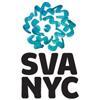
School of Visual Arts (SVA) has been a leader in the education of artists, designers and creative professionals for more than seven decades. With a faculty of distinguished working professionals, a dynamic curriculum and an emphasis on critical thinking, SVA is a catalyst for innovation and social responsibility. Comprising over 6,000 students at its Manhattan campus and over 39,000 alumni in 128 countries, SVA also represents one of the most influential artistic communities in the world. The College offers 31 undergraduate and graduate degree programs, and a full range of courses through its Division of Continuing Education.
Artists interested in studying animation may enter BFA Animation, BFA Computer Art, Computer Animation and Visual Effects or MFA Computer Arts programs. In each, the faculty includes some of the best artists in the industry, who bring knowledge and experience in multiple disciplines straight from the studio into the classroom. You will not only learn innovative drawing techniques and methods of storytelling, but also industry standard software.
BFA Animation students are immersed in hands-on experience, whether studying traditional, stop-motion or computer animation. Special working relationships with alumni-owned Plymptoons, Titmouse and Augenblick studios—as well as with other independent animation creators throughout New York—provide extraordinary opportunities for internships and part-time employment. BFA Animation students have produced pieces for non-profit organizations and public service organizations such as Ted-ED, UNICEF, and UNESCO.
Students in BFA Computer Art, Computer Animation and Visual Effects navigate a unique curriculum that focuses on the integration of 2D and 3D computer graphics within computer animation, visual effects and motion graphics. Students receive comprehensive instruction in 3D computer animation with advanced classes in 3D modeling, lighting, texturing, dynamics, character animation, and motion capture. Visual effects courses feature advanced instruction in digital video, green screen studio production, compositing, rotoscoping, and VFX animation.
Founded in 1986, the MFA Computer Arts Department was the first MFA program in the U.S. to focus on computer art. The program emphasizes creativity and a multidisciplinary approach to producing innovative animation, motion graphics and experimental art within a collaborative state-of-the-art production environment. Students in the program benefit from guest lectures that cover all areas of animation, motion graphics and visual art, workshops, visiting artists, and internship opportunities.
Graduates of the BFA and MFA animation and computer arts programs at SVA have gone on to open their own studios or land positions at some of the world’s top companies and digital studios including Blue Sky Studios, Disney Animation, DreamWorks Animation, ILM, MTV, Nickelodeon, Pixar, Warner Bros. Animation, Sony Pictures Imageworks, and independent studios around the world. They have become Academy-Award winners, Emmy-Award winners, Grammy winners, MacArthur Fellows, and Guggenheim Fellows.
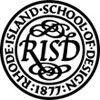
Rhode Island School of Design (RISD) was founded in 1877, making it one of the first art and design schools in the U.S. For the 2020-2021 school year, the school welcomed just over 2,200 students from around the world. Offerings include undergraduate and graduate degrees in 21 majors, a certificate program, one concentration, and continuing education courses that attract 5,800 students each year.
Degree programs are offered in Architecture, Art Education, Design or Fine Arts. For aspiring animators, the Film/Animation/Video (FAV) Department offers a BFA in FAV. Home to 145 students, FAV allows students to “explore the art of the moving image, learning to master the tools needed to articulate a creative vision, whether using film, animation, installations, interactive media or a combination,” says the school. Majors specialize in animation, live action or open media with the option to produce films in genres such as experimental, narrative, and documentary.
Regardless of specialization, all students have the opportunity to work on “more ambitious projects involving cinematography, lighting, sound design, character design, digital editing, compositing, producing, storyboarding and interactive programming.”
During this four-year program, students will also be exposed to critical review, film festivals, and visiting artists. An internship is part of the program as well as the opportunity for students to present their finished films to the community.
RISD graduates go on to become entrepreneurs or many have been hired at studios such as DreamWorks and Pixar, or networks like Fox, HBO and PBS.
Famous RISD alumni include Daniel Sousa, animator and director of the Oscar-nominated film Feral; Gus Van Sant, director of films such as Good Will Hunting, Finding Forrester, and Milk; Lance Wilder, animator for The Simpsons, and Seth Macfarlane, creator of Family Guy.

Situated in the historic Clinton Hill section of Brooklyn, New York, Pratt Institute prepares its nearly 5,000 students for careers in architecture, art, design, information science and liberal arts, and liberal arts and sciences. Founded in 1887, the school, which offers more than 25 undergraduate degree programs and concentrations along with more than 26 graduate degree programs, has additional campuses in Manhattan and Utica, New York.
At the main campus in Brooklyn, students are enrolled in programs in the schools of Architecture, Art, Design, and Liberal Arts and Sciences.
The School of Art houses the Department of Digital Art and the Graduate School of Art, home to the Digital Arts BFA Program and the MFA in Digital Animation and Motion Arts. The BFA has two emphasis areas: 2D Animation and 3D Animation and Motion Arts. Both areas prepare students for positions in digital animation, experimental fine arts, and interactive media.
In the 60-credit MFA program, students create “evocative” narrative and non-narrative films using 2D and 3D digital animation techniques, live action, and motion graphics. A number of electives are available including Advanced Digital Animation Techniques, Character Animation, Character Design, Compositing and Special Effects, Lighting and Rendering, Motion Dynamics, and Storyboard and Storytelling.
Students in both the BFA and MFA programs have many opportunities to intern at NYC production studios such as Cartoon Network, Curious Pictures, and Psyop Studios. Outside of NYC, options include Blue Sky Studios, Disney, and Sony Imageworks, to name a few.
After graduation, Pratt alumni can be found working at top studios such as Augenblick, Blue Sky Studios, Digital Domain, Disney Animation Studios, Gameloft, Industrial Light & Magic, NBCUniversal, Inc., Rhythm and Hues Studios, Sony Imageworks, and Titmouse.

Gnomon School of Visual Effects recently received the ACCSC School of Excellence Award. Bestowed by the Accrediting Commission of Career Schools and Colleges, the award placed Gnomon in the top 3% of ACCSC-accredited schools and colleges. Established in 1997, the school’s campus is located in Hollywood, California, within the historic Television Center Studio Lot, where classrooms mimic the environments of real production studios.
Both degree and vocational certificate programs are available to students looking to break into the entertainment industry. Individual 10-week courses are available as well, allowing students to mix and match courses to meet their goals.
Formal programs include a BFA or Certificate in Digital Production. A one-year preparatory program, Foundation in Art & Design, is also available.
The BFA in Digital Production is a full-time program that may be completed in three or four years. Per the school, the curriculum for this baccalaureate program “covers all aspects of a 3D generalist skillset, providing an in-depth understanding of the 3D production pipeline, visual arts, and general education studies.” Through electives, students can enhance particular skills in specific areas of digital production.
The BFA program, which culminates in the creation of a professional demo reel, prepares students to work as digital artists within the animation, games, and VFX industries.
The Certificate in Digital Production is a full-time, two-year program offering emphasized studies in character or creature animation, games, modeling and texturing, or visual effects. Building on the 3D generalist foundation, this intensive program is “geared towards students with a background in art and who desire a career as a digital artist” in the animation, film, games, or visual effects industries.
With a 97% employment rate, Gnomon has helped graduates of both programs land positions at major studios such as Blizzard Entertainment, Digital Domain, DreamWorks, Electronic Arts, Industrial Light & Magic, Marvel Entertainment, Nickelodeon Animation, Reel FX, Rhythm & Hues, Sony Pictures Imageworks, and Walt Disney Animation Studios.
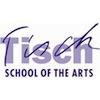
Founded in 1965, Tisch School of the Arts is part of New York University (NYU). Founded in 1831 and serving more than 60,500 students, New York University (NYU) is the largest private university in the U.S. With the highest number of international students in America, the school has degree-granting campuses in New York and Abu Dhabi, and it operates 11 global academic centers and research programs in more than 25 countries. With more than 19,000 employees, NYU is also one New York’s largest employers.
Tisch School of Arts is home to the Maurice Kanbar Institute of Film and Television. Together, the faculty, staff, and students here create more than 5,000 films per year. The Institute, which houses the Department of Animation and Digital Arts, has an Animation Area, which leads to a BFA in Film and Television.
The Animation Area began in 1979 with just three classes: Art & Design, Animation I, and Animation II. For the 1980-1981 academic year, the program served 80 students enrolled in five classes. In 2013, the program enrolled 461 students. Today, the program serves hundreds of students from 48 states and 39 countries.
The Animation Area at NYU Tisch “serves the needs of all Film and TV students for both animation and live-action projects,” says the school. The current curriculum “is varied and integrated with both traditional animation and 2D and 3D animation courses at fundamentals, intermediate and advanced levels, as well as storyboarding, titles, optical and digital effects, life drawing and history and criticism classes.”
The program consists of nineteen courses. Highlights include Action Analysis I & II, Advanced 3D Animation Production, Animation: From Pitching to Pipeline to Production, Drawing and Design for Animation, Experimental Animation, Life Drawing: Anatomy, Motion Design & Titles, Special Topics in 3D Computer Animation, Stop-Motion Animation, Storyboarding, Visual Effects and Compositing, and Writing for Animation.
Other program highlights include internship opportunities, study abroad experiences, and guest speakers. Past guests have included Chuck Jones, David Polonski, Frank Thomas, Jeffrey Katzenberg, and Roy E. Disney, among others.
Graduates of the Animation program at Tisch have landed jobs at major studios such as DreamWorks, Pixar, Walt Disney Animation Studios, and many others.

Established in 1979, Full Sail University offers AS, BS, BFA, MS and MFA programs in Entertainment, Media, and the Arts. Graduate certificates are also available. Located just 35 minutes from downtown Orlando and Universal Studios, the school also offers unique internship opportunities to its approximately 15,000 students.
Program options for aspiring animators include a BS in Computer Animation that takes 20 months to complete on campus, and 32 months to complete online.
Students can expect to take courses such as 3D Animation, Animation Production, Character Animation, Character Rigging, Compositing and Scene Finishing, Creative Presentation, Historical Archetypes and Mythology, Model Creation, Psychology of Play, Shading and Lighting, Technology in the Entertainment and Media Industries, and Visual Development.
Students will complete two Professional Development Seminars in Computer Animation, Career Readiness: Computer Animation, and seven Project and Portfolio courses including Project and Portfolio I & II: 3D Arts, and Project and Portfolio III-VII: Computer Animation.
In the professional development courses, students will explore the computer animation industry and learn to evaluate, modify, and maintain their personal brand. “Guest speakers will provide students with insight into real-world professional experiences,” says the school. the career readiness course helps students “prepare for the job market and continue to develop their personal brand.”
“Students will learn the best strategies for crafting résumés, cover letters, and deliverable portfolios designed specifically for the computer animation industry. Additionally, students will navigate networking opportunities, the job search, and standard industry practices for employment interviews.”
Full Sail’s Project and Portfolio courses combine “hands-on learning experiences with summative and formative portfolio assessments.” The courses are taken in addition to an internship, which can be pursued after the student has successfully completed 50% of the required credit hours for the BS program.
In 2020, more than 140 Full Sail graduates worked on the year’s Oscar-nominated films, with alumni earning credits on 24 Oscar-nominated projects across 20 categories.

Rochester Institute of Technology (RIT) began with the merging of prominent cultural association, the Rochester Athenaeum (est. 1829), and a technical training school known as Mechanics Institute, (est. 1885). The Institute adopted the name Rochester Institute of Technology in 1944 and awarded its first Bachelor of Science degree in 1955. Today, RIT has campuses in Rochester, New York, Dubai, Croatia, Kosovo, and China and it serves nearly 19,000 students majoring in everything from Art and Design to Robotics and Science Exploration.
The College of Art and Design at RIT houses the School of Film and Animation, which has several options for aspiring animators. Undergraduate offerings include BFA degrees in Film and Animation, Film and Animation: Animation Option, and Film and Animation: Production Option. Graduate options include an MFA in Film and Animation.
The BFA in Film and Animation focuses on production, screenwriting, 2D animation, 3D animation, and stop-motion animation, while the BFA in Film and Animation: Animation Option has three tracks: 2D, 3D, or Stop-Motion Animation. Each Track allows for exploration of animation for film, games, AR/VR, digital effects, compositing, sound design, and the integration of animation with live-action storytelling. In all tracks, students make films from day one, culminating in a thesis film their final year.
Students in the Film and Animation: Production Option BFA Program will explore fictional, documentary, and experimental live-action filmmaking. “This option requires many exercises and a minimum of three significant works, one of which is a year-long senior thesis.”
The MFA in Film and Animation has four options—2D Animation, 3D Animation, Production, and Screenwriting. Students in the program “create live-action production, scripts, 2D, 3D, or stop-motion animation that is unique,” says the school. All options require two years of coursework and a thesis project. Opportunities for independent studies, internships, and concentrations through electives are also part of the program as well as required screenings for all student-produced films.
RIT graduates have gone on to hold research engineering roles at places like Sony and Dolby and have positions in filmmaking and animation at Lucasfilm and other major companies. MFA graduates work at top animation studios such as Blue Sky Studios, Disney, DreamWorks, Electronic Arts, Industrial Light and Magic, and Nickelodeon.
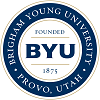
Brigham Young University (BYU) was founded in 1875 by The Church of Jesus Christ of Latter-day Saints (LDS). With 30,745 undergraduate students, BYU says it has the largest undergraduate enrollment of any private university in the U.S. The school also serves close to 2,800 graduate students enrolled in 88 master's degree programs, and 32 doctorate programs. Around 187 undergraduate majors and 110 undergraduate minors are also offered across dozens of colleges and departments.
The College of Fine Arts and Communications, Department of Design offers a BFA in Animation and the College of Physical and Mathematical Sciences, Department of Computer Science offers a BS in Computer Science with a limited enrollment Animation Emphasis. In the BFA program, students study digital and traditional animation, illustration, figure drawing, and other topics. They also have opportunities to visit artist, film and gaming studios, study abroad, and complete an internship. All students will work on personal and group projects, and major films, and develop portfolios that will help them secure a position in the animation industry.
The 79-hour BYU Computer Science Animation Emphasis gives students a strong background in computer science fundamentals (38 hours), which is complemented by courses in visual arts (21). Course highlights include 3D Computer Graphics, 3D Visual Effects, Computer Programming, Concepts of Programming Languages, History of Animation, Interactive Graphics and Image Processing, Lighting for Three-Dimensional Graphics, Photography for Animation, Shader Processing, and Video Game Production.
Students in both programs have the opportunity to gain entrance to the BYU Center for Animation (est. 2010), which operates under the direction of three colleges—the Ira A. Fulton College of Engineering and Technology, the College of Fine Arts and Communications, and the College of Physical and Mathematical Sciences. Accepting just 20-25 students each year through the BFA or BS program, the BYU Center for Animation is a competitive, highly dynamic, hands-on program structured to provide students with the skill sets necessary for success in the animation, live-action, special effects, and game industries.
Graduates of the animation programs at BYU have landed positions at gaming and feature film companies such as Blizzard Entertainment, Blue Sky Studios, Digital Domain, Disney, DreamWorks, Hasbro, ILM, Nickelodeon, Pixar, Riot Games, and Sony Pictures Animation.

Established in 1929, Academy of Art University is one of the largest private, accredited art and design schools in the nation. Family-owned, the school is located in one of the world’s top cities for animators. Serving more than 7,200 students from 112 countries, Academy of Art offers programs from acting, animation and architecture to visual development, web design, and writing for film and television. Degrees are offered at both the undergraduate and graduate levels, and many programs are available entirely online.
The School of Animation and Visual Effects (VFX) is the only school of its kind to teach in a studio production environment (StudioX). “The “X” in Studio X stands for the valuable eXperience students gain as they prepare for animation careers,” says the school. Graduates have gone on to land positions at top studios such as Blue Sky Studios, Industrial Light & Magic, Laika, Sony Pictures, Walt Disney Animation Studios, Weta Digital and many others.
Program options for aspiring animators include a four-year Certificate program and AA, BFA, MA and MFA in degrees in Animation and Visual Effects.
The AA program “offers students a strong introduction to the core principles of animation production.” The BFA program allows students to specialize in one main area of the industry. Emphasis is placed on creating a professional demo reel and/or portfolio in tune with the latest industry trends. Specialization areas include 2D Animation, 3D Animation, 3D Modeling, Stop-Motion, and Storyboarding.
Course highlights include Cinematics for Animation & VFX, Computer Animation Production, Lip Sync & Facial Performances, Preproduction Principles, Previs & Postvis, Producing for Animation & Visual Effects, and Sketching for Communication. Students will also complete a collaborative project, internship and senior portfolio.
The MA program “provides students an opportunity to work in 2D Animation & Stop-Motion, 3D Animation, 3D Modeling, or Visual Effects, while focusing on storytelling with an emphasis on exhibiting technical skills and eliciting emotional responses.” Students can expect to take courses such as 3D Animation Physics and Mechanics, Advanced Character Animation, Feature Animation, Gesture & Quick Sketch for Animators, and Storyboarding. Students in the program will also complete a portfolio.
The MFA program “focuses on developing skills in any one of the many areas of expertise within the animation and visual effects industry. The program educates students in all aspects of animation and visual effects, from ideation to post production.” Course highlights include 3D Modeling & Animation (Maya), Acting for Animators, Perspective for Characters & Environment, Storyboarding for Thesis, Traditional Animation, and Visual Effects for Animation. MFA students will also take several Directed Study courses and Special Topics, as well as Animation: Thesis Completion, Final Portfolio Preparation, and ANM 900: Internship.

Founded in 1930, ArtCenter College of Design sits on a hillside campus that consists of 165 wooded acres and a sprawling modernist steel-and-glass structure. The school also has campuses in downtown Pasadena and Los Angeles, and satellite studios in Petersen Automotive Museum (Miracle Mile, Los Angeles) and Berlin, Germany.
Serving approximately 2,335 students, ArtCenter offers 11 undergraduate and seven graduate degree programs in a variety of Applied Arts, Industrial Design, and Visual disciplines. The Industrial Design Program offers a joint MS/MBA in partnership with the Drucker School of Management. Programs for aspiring animators include a BS in Entertainment Design with three tracks: Animation, Concept, and Game Design.
The Animation Track develops students’ skills in the disciplines of art direction, character animation, lighting for 3D and 2D animation, modeling, and storyboarding, while the Concept Track focuses on the skills and creative ability required of entertainment industry concept designers. Game Design prepares students to create and convey game concepts through prototyping and production for multiple platforms.
Entertainment Design graduates are prepared for career opportunities as animators, lighters, modelers, and storyboard artists with companies such as 343, Blur, Disney, DreamWorks, ILM, Pixar, Riot, and Sony.

California College of the Arts (CCA) is a private nonprofit institution that has been in existence for more than 100 years. Founded in 1907 by a German-born cabinetmaker with links to the Arts and Craft Movement, CCA is one of America’s top art and design colleges that also specializes in architecture and writing. When founder Frederick Meyer opened the School of the California Guild of Arts and Crafts (now CCA), the school had just three teachers and 43 students. Today, some 100 full-time and 400 part-time faculty members serve 1,850 students from 42 states and 49 countries.
Degree options at CCA include 22 undergraduate and 11 graduate programs. The Animation Department is home one of the school’s largest majors –the BFA in Animation. Students in the program receive guidance from faculty, including visiting artists, who the school says are “part of animation teams for DreamWorks, Pixar, Tippett Studio, and other studios that have won prestigious awards for their animated films.”
With guidance from experienced faculty and industry professionals, students will learn how to make 2D animation, 3D animation, and visual effects for video games, as well as stop-motion animation, and more. “Courses hone technical expertise in timing and spacing, weight, and other key animation principles.” Students will “learn to combine the skills of both director and actor to create characters with authentic emotion and tell stories that make a real impact.”
Course highlights for the program include Advanced Animation 3D Tips & Tricks, Animation: Visual Storytelling, and Drawing for Animation as well as 3D Character Modeling, Acting for the Animator, Color & Design Visual Development, and Experimental Animation. Students will complete a number of workshops and projects, and internship opportunities are available.
In 2019, the BFA in Animation program began offering a Games Track. The option consists of a “series of courses that teach the discipline of Game Arts, the fundamentals of Game Design, the process of Games Development, and the nuances of Game Animation.” Course highlights include Game Design, Games Development, Game Making, and Worldbuilding. “Animators in the Games Track will produce collaborative and individual works of game art as their capstone projects.”
Graduates of CCA’s Animation programs have been hired at major animation studios and companies such as Cartoon Network, DreamWorks Animation, Nickelodeon Animation Studios, Pixar, Sony Pictures Animation, and Walt Disney Feature Animation.
Graduates have also landed positions at game studios such as Electronic Arts, Phosphor Games, Vigil Games, and many others.

Founded in 1900 by industrialist and philanthropist Andrew Carnegie, Carnegie Mellon University (CMU or Carnegie Mellon) is a global university with more than a dozen degree-granting locations, and more than 20 research partnerships. Just a few locations include Silicon Valley, Africa, Qatar, and Australia. Serving around 14,800 students representing 117 countries, the school has produced 10 Academy Award winners, 50 Tony Award Winners, and 20 Nobel Laureates. CMU is also the former home of one of the world’s most famous artists—Andy Warhol.
Carnegie Mellon offers 80 majors and over 90 minors within its six undergraduate schools, colleges, and inter-college degree programs. The College of Fine Art (CFA), which houses the School of Art, was the first comprehensive arts training institution in the country. For aspiring animators, the school offers a BFA in Electronic and Time-Based Media with a Focus in Animation, a BFA in Integrative Design, Arts & Technology (IDeATe) with a Concentration in Animation & Special Effects, and a Minor in Animation & Special Effects.
The Electronic and Time-Based Media BFA “explores the creative potential of emerging technologies and the critical impact they have on contemporary culture,” says the school. The curriculum “implicitly encourages cross-disciplinary study.” As such, “many students merge fine art and computer science based interests either within the BFA program or through the unique BCSA degree program.” Besides Animation, students may focus in unique areas such as Bioart, Computational and Interactive Art, Tactical Media, and Tangible Media, as well as Game Arts and Video and Performance. “Students particularly interested in the intersection of art and technology can take advantage of expanded course offerings through the IDeATe Program.”
IDeATe “supports eight interrelated undergraduate areas, all of which can be taken as minors. The themes of these areas integrate knowledge in technology and arts: Game Design, Animation and Special Effects, Media Design, Sonic Arts, Design for Learning, Innovation and Entrepreneurship, Intelligent Environments, and Physical Computing.” The IDeATe curriculum consists of 30 new interdisciplinary technology-arts courses focused on “hands-on collaborative learning and are structured to combine students from many different disciplines.”
Students in the BFA in IDeATe with Animation & Special Effects “will study the interconnected components of performance capture, rendering, 3D and 2D animation, and special effects. They will merge arts and technology perspectives in all courses to explore each of these components and the area of digital animation as a whole. Through common repositories across courses and collaborative projects, students will explore how the different components and types of expertise come together to create a convincing computer animated experience.”
Students in the BFA in IDeATe, and the Minor program (which collaborates with CMU’s Robotics Institute) will be able to “connect to other IDeATe courses to explore applications of digital animation in different contexts (games, interactive environments etc.) and to integrate other key areas of knowledge (narrative, sound) into digital animation projects.”
The School of Art at CMU also offers supportive courses that “serve to enrich the student experience in IDeATe.” Offerings include Advanced ETB: 2D Animation, Advanced ETB: Animation, Advanced ETB: Moving Image Magic: Visual Effects and Motion Graphics, and Animation, Art, and Technology.
CMU graduates have been hired at Activision, Blizzard Entertainment, Comedy Central, Disneytoons Studios, DreamWorks Animation, Electronic Arts, MTV, Paramount, Sony Interactive Entertainment, Walt Disney Studios, Warner Interactive, Zynga Games, and more.

Founded in 1866, the School of the Art Institute of Chicago (SAIC) is one of the oldest accredited independent schools of art and design in the country. Recognized as “the most influential art college in the United States,” by Columbia University’s National Arts Journalism survey, SAIC offers more than 50 areas of study in 24 departments.
The Film, Video, New Media, and Animation Department (FVNMA) offers several programs for aspiring animators including BFA and MFA in Studio degrees with a Concentration Animation, and a Certificate in Studio. The Department says it “endorses and encourages experimentation with radical form and content,” and is “open to many approaches to and understandings of experimental media art.” The Department is “dedicated” to helping students develop their “art practice in a variety of forms and contexts including the use of high definition video, new media art, experimental 3D animation, hand-drawn animation, and filmmaking.”
Students in the FVNMA department are taught by “award-winning pioneers,” “revolutionaries,” and working professionals in the fields of experimental film, video, animation, nonfiction, narrative, installation, glitch, interactivity, art games, curating, archiving, and web-based art projects. Students also learn from “internationally renowned artists, critics, historians, and curators who regularly visit through the department and SAIC's Visiting Artists Program.”
Other FVNMA Department highlights include graduate projects and fall and spring critique weeks for MFA students, as well as access to world-class resources such as the Art Institute of Chicago Museum, on-campus galleries, and state-of-the-art facilities. Examples include The Gene Siskel Film Center, The Donna and Howard Stone Gallery for Film, Video, and New Media at the Modern Wing, and The Video Data Bank, which is considered the leading resource in the United States for videos by and about contemporary artists.
Famous SAIC alumni include Cynthia Rowley, David Sedaris, Georgia O’Keeffe, Elizabeth Murray, Jeff Koons, LeRoy Neiman, Michelle Grabner, Nick Cave, and Richard Hunt.

Otis College of Art and Design (OTIS) was established in 1918 by General Harrison Gray Otis—founder and publisher of the 47-time Pulitzer Prize-winning Los Angeles Times. The school, which serves approximately 1,100 full-time students, is a private nonprofit institution and national leader in art and design education. “Alumni and faculty are Fulbright, MacArthur, and Guggenheim grant recipients, Oscar awardees, legendary costume designers, leaders of contemporary art movements, entrepreneurs, and design stars at Apple, Abercrombie & Fitch, Pixar, DreamWorks, Mattel, Nike, and Disney,” says the school.
OTIS offers 11 BFA degree programs including Architecture/Landscape/Interiors, Digital Media (Animation, Game and Entertainment Design, and Motion Design), Fashion Design, Communication Arts (Graphic Design, and Illustration), Fine Arts (Painting, Photography, and Sculpture/New Genres), Product Design, and Toy Design. Otis also awards an MFA degree in Fine Arts, Graphic Design, Public Practice, and Writing, and a variety of minors and certificate programs are available.
The Animation Program is offered in the Digital Media Department. Options include a BFA in Digital Media with an Animation Major, a Digital Media Minor, and a Digital Media Arts Certificate with a Specialization Track in Animation. Students in the animation program will “learn to tell compelling stories through digital media.” They have the option to concentrate in Animation, Game and Entertainment Design, or Motion Design.
Course highlights for the Animation Concentration include Connections Through Color and Design, Animation Explorations, Basic 3D for Storytellers, Concept Development and Creativity, Form and Space, Storytelling for Digital Artists, The Visual Language of Film, Games and Design, and Writing in the Digital Age. Students will also complete a Business Seminar, Practicum in Animation, a Senior Project, and Capstone course.
The Practicum provides the opportunity for students to work with outside companies and designers who assign one or more advanced character animation assignments across the year. Students will learn how to run projects from start to finish.
“By graduation students will be able to meet the demands of a diverse and expanding job market in visual storytelling for film, television, video games, apps, and the web.” Graduates of the program “have thriving careers” at companies like Disney, DreamWorks, ILM, Nickelodeon, Pixar and many others.

Established in 1988, DigiPen Institute of Technology is one of the country’s youngest art, technology, and design schools. Though young, DigiPen was the first college in the world to offer a bachelor’s degree in video game technology and development and in during the schools three decades in existence, more than 550 companies have hired its graduates.
Located near more than 400 interactive media companies in one of the largest video game centers in the world, DigiPen serves around 1,175 students from across the U.S. and nearly 50 countries around the world. The school also has international campuses in Singapore and Spain as well as educational partnerships with Keimyung University in South Korea and Thammasat University in Thailand.
DigiPen offers nine undergraduate and two graduate program options in five categories: Computer Science, Digital Art and Animation, Engineering, Game Design and Development, and Music and Audio. Offerings for aspiring animators include a BFA in Digital Art and Animation and an MFA in Digital Arts.
The BFA program is designed to prepare students to create artwork at the professional level. In addition to excellent drawing skills, students will gain production experience, familiarity with modern studio processes, and storytelling abilities. As a student in the BFA program, aspiring animators can expect to “learn practice the many roles that make up the art production pipeline for games and animation,” says the school.
Course highlights for the program include 2D & 3D Animation, Art and Technology, Career Preparation, Cinematography for Visual Effects, Conceptual Illustration and Visual Development, Environment and Level Design, Production Pipeline, Storyboards, and Storytelling.
A core component of the BFA curriculum is Multidisciplinary Team Projects, which the school says provides the opportunity for students to “contribute on collaborative endeavors in student games, animated films, and more.” The semester- and year-long projects give students the opportunity to “see a project through from the concept stage to final, polished product.” Potential careers for graduates include Animator, Character Artist, Environmental/Asset Artist, Producer, Simulation and Effects Animator, UI Designer, and many others.
In addition to the Redmond campus, the BFA in Digital Art and Animation is available at the school’s international branch campuses including Digipen Europe-Bilbao and Digipen Singapore.
The MFA is a terminal degree program that allows students to build on their foundation and “expand beyond traditional arts.” Students will hone their craft in digital media and “focus on new areas of specialization” in the digital media industries. The MFA culminates with an advanced thesis project that allows students to develop and present an original body of work that is both personal and reflective of their strongest capabilities as a digital artist.
In addition to the thesis project, students will have the opportunity to collaborate with their fellow artists on team-based projects including games and films as part of elective coursework. These collaborative projects give students “firsthand experience creating 2D and 3D digital assets in a setting that reflects the professional studio environment.”
Graduates of the MFA program are prepared to seek positions in both academia and production. Possible roles include Animator, 3D Modeler, Character Artist, Professor of Fine Arts, Senior Animator, Senior Character Artist, and Texture Artist.
Graduates of the Digital Art Programs at DigiPen have been hired at companies such as Activision, Amazon Game Studios, Animation Collective, Apple, ArenaNet, Blizzard Entertainment, Disney Online, DreamWorks Interactive, Electronic Arts, Facebook, Google, Microsoft, Nintendo, Riot Games, Sony Online Entertainment, Sucker Punch Productions, Walt Disney Imagineering, Warner Bros. Interactive Entertainment, Zynga, and many others.

DePaul University was founded in 1898 by the Congregation of the Mission (of Vincentian) religious community, which follows the teachings of 17th-century French priest St. Vincent de Paul. Serving nearly 22,500 students, DePaul is the largest Catholic university in the United States, the 13th-largest private, not-for-profit university in the nation, and the largest private, not-for-profit college in the Midwest.
The school offers more than 300 programs of study across 10 colleges and schools and two campuses in Chicago. The College of Computing and Digital Media (CDM) is home to the School of Cinematic Arts, which houses the Animation Program. With more than a dozen full-time animation professors, the school has one of the largest full-time animation faculties in the U.S.
Program options for aspiring animators include BA, BFA, MA, and MFA degrees in Animation. The BFA program offers concentrations in 3D Animation, Cinema Animation, Game Art, Motion Graphics, and Storyboarding and Character Design. The MA program offers concentrations in 3D Animation, Motion Graphics, Technical Artist, and Traditional Animation.
The BA in Animation “emphasizes the art of animation, creativity, and critical thinking,” says the school. This “extremely” flexible and interdisciplinary degree allows students to experiment with the latest in animation software, technologies, and tools including 3D, green screen studios, hand-drawn, motion capture, motion control, and stop-motion.
The BFA in Animation provides a “thorough foundation in the art of animation and its history, combined with intense practice in traditional animation (hand-drawn, stop-motion, and hybrid), and 3D computer animation and modeling.”
The MA in Animation “provides a combination of artistic and technical training that prepares students for a future in 3D character animation, traditional animation, computer game art, or visual effects.” The MFA in Animation is the “premier degree” of the graduate program and it’s designed for students who are interested in “creating original animated films and artwork as their main vocation, and is the terminal degree in the field.”
Students in all programs have the opportunity to work with game development teams, participate in CDM’s annual Premiere Film Festival, which showcases the best of student work in animation and cinema, and study and intern in Los Angeles for three months through the school’s innovative LA Quarter Program.
Past participants in the LA Quarter program have interned at Warner Brothers, DreamWorks Animation, Sony Studios, Disney, Nickelodeon, The Mill, The Jim Henson Company, Titmouse Animation, Bix Pix Animation, and others. Back at home, students will also benefit from CDMs relationship with Chicago’s largest game development and animation studios.
Animation students also benefit from the visiting artist series, which brings “innovative practitioners and industry leaders to the DePaul campus for film screenings, on-stage conversations, and professional panels.” Past artists have visited from Disney and Pixar. The student organization Animation Lodge and Project Bluelight are other program highlights.
The Lodge is a place where students can network, build their portfolios, work on group projects, and discuss animation trends and techniques. Project Bluelight is a professional, educational, and community outreach program where students receive hands-on experience in motion picture production.
Graduates of the Animation programs at DePaul have been hired in animation roles at Blizzard Entertainment, DreamWorks Animation, Electronic Arts, Google, Laika Studios, Nickelodeon, Phosphor Studios, Synapse Games and Wargaming, to name a few.
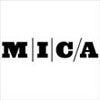
Founded in 1826, Maryland Institute College of Art (MICA) is the nation’s oldest independent, continuously degree-granting college of art and design. The College enrolls nearly 3,500 students from 49 states and 52 countries and it attracts more than 175 visiting artists, critics, designers, poets , writers, and art historians from across the U.S. and around the world each year.
MICA offers around 80 programs leading to the BFA, MA, MFA, or MPS degree. Study areas include art education, design, electronic media, fine arts, liberal arts, and professional studies. A number of post-baccalaureate certificate programs are also offered.
Programs for aspiring animators are offered through the Animation Department. Options include a BFA in Studio with a Concentration in Animation, a BFA in Studio + Humanistic Studies, and a Minor in Animation.
Three pathways are available for the BFA including Traditional Narrative/2D, Stop-Motion, and 3D Animation. The program begins with a fundamental understanding of the art of movement then progresses through areas such as 2D hand-drawn animation, 3D computer imaging, animation history, stop-motion, and innovative combinations of these processes.
Unique course highlights for the program include 3D Character Animation: Performance, 3D Modeling Landscape, Animated Music Video, Animation in Unique Spaces, Astro-Animation, 3D Modeling Landscape, Virtual Reality for Artists, Virtual to Real: Rapid Prototype, and Stop-Motion Open Studio. The program culminates in a thesis film in students’ final year.
The BFA in Animation + Humanistic Studies covers animation studies along with philosophy and ethics, social and natural sciences, and social and political history. Course highlights for the program include Art Matters, Character Animation, Drawing, Digital Tools For Animation, Electronic Media & Culture Elements of Visual Thinking, and Stop-Motion.
The Minor in Animation requires 15 credit hours of study. Required courses include The Principles of Animation and Digital Tools for Animation, Animation Pre-Preproduction OR Storyboarding for Animators, and Introduction to 3D Animation OR Stop-Motion Animation.
MICA animation graduates have been hired by Blue Sky Studios, Disney, DreamWorks, Laika, MTV, and other major companies and studios. Many MICA graduates have continued their education in graduate programs or have successful careers as freelance artists in the animation industry.

Loyola Marymount University (LMU) was established in 1911 with a mission to encourage learning, the education of the whole person, the service of faith, and the promotion of justice. Serving nearly 9,600 students, the school has three campuses that it says are “are rooted in the heart of Los Angeles, a global capital for arts and entertainment, innovation and technology, business, and entrepreneurship.”
LMU offers 60 major and 56 minor undergraduate degrees and programs, 49 master's degree programs, one education doctorate, one doctorate in juridical science, one juris doctorate, and 14 credential programs. Programs are offered in seven colleges and schools, including the School of Film and Television, home to LMUs Animation Program. Program options include a BA in Animation and a minor that is open to all students, regardless of major.
The BA in Animation encourages the development of a personal artistic vision as students immerse in the collaborative filmmaking process. After completing lower division courses, students will have the opportunity to choose one of three tracks: Traditional, 3D, or Interactive Animation. Course highlights for the program include Advanced Storyboard, Animation Workshop, Digital Toolbox, Experimental Animation, Game Design, Interactive Animation, Mechanics of Animation, and Visual Story Development for Animation.
During the final years of the program, students will complete an Animation Internship that provides the opportunity to gain valuable experience in the field. During their senior year, students will write, animate, and direct a thesis film/project for their portfolio.
The Animation Minor is an 18 credit hour program consisting of History of Animation, Introduction to 3D Computer Animation, Introduction to Interactive Animation, Beginning Animation Workshop, Visual Story Development, and three elective courses (nine semester hours), chosen from 300 and 400 level Animation courses under the direction of the Chairperson.
Both BA and Animation Minor students “will be prepared to take creative leadership roles in new and emerging industries. Many will work within the studio system while others will be independent artists.” Graduates of the programs “work in movies, television, videogames, and many other media. Many have won awards at film festivals in this country and abroad.”
Alumni include notable industry professionals such as Van Partible—creator/director of the Cartoon Network series Johnny Bravo; Emmy Award-winning producer/director of The Simpsons, and co-writer of The Simpsons Movie, David Mirkin, and Lauren Montgomery—director of the Warner Bros. animated features Wonder Woman, Superman: Doomsday, and Green Lantern: First Flight.

Columbia College Chicago (Columbia) was founded in 1890 as the Columbia School of Oratory by Mary A. Blood and Ida Morey Riley. Both women were graduates of the Monroe Conservatory of Oratory (now Emerson College, in Boston, Massachusetts). By 1904, the school had a new name, Columbia College of Expression, and in 1927 it became a sister institution with the Pestalozzi-Froebel Teachers College. Columbia College of Expression dissolved its partnership with the Teachers College In 1944 and became Columbia College. Nearly 50 years later, the school became what it is known as today—Columbia College Chicago.
Serving nearly 7,000 students from all 50 states and 60 countries, Columbia offers 150 majors, minors, and graduate programs in the Schools of Media Arts, Fine and Performing Arts, and Liberal Arts and Sciences. The School of Media Arts is home to the Interactive Arts and Media Department, which offers three degree programs for animators: a BA in Animation and BFAs in Computer Animation or Traditional Animation. A Minor in Animation is also available. Students in all programs begin animating in their first year.
Per the school, “BA students have the option of working with a team their senior year to create an animated film in Animation Production Studio, they can work on their own solo film, or take electives that will help them polish their demo reels and gain professional-level competency in the areas of their choosing.”
The Animation Production Studio is an intensive, two-semester capstone course that introduces students to the animated film process. Studio students will have the opportunity to, “supervise and be supervised in roles ranging from director to editor.” Finished films will be presented at Columbia College’s annual urban arts festival known as “Manifest,” which “celebrates the amazing work” of the school’s graduating students.
BFA students are required to take Animation Production Studio and produce their own animated thesis film as a solo project. This is similar in scope to the team project except students will have three full semesters to complete it. Students in the program will work as the producer, director, editor, and every other role in between.
All students will have the opportunity to take the one-credit course—Animation Studios in LA—where they will spend time learning professional standards and industry preparation as well as touring local animation studios such as Cartoon Network, Disney, DreamWorks, Nickelodeon, and Warner Bros.
Graduates of the Animation programs at Columbia College Chicago have won Oscars and Emmys and they have worked on popular animated films and series such as Brave, Coco, Finding Dory, Frozen, Pocahontas, Robot Chicken, The Lego Batman Movie, The Lion King, and UP. Alumni work at networks and studios such as Cartoon Network, Disney, DreamWorks Studios, Nickelodeon, Pixar, Warner Bros. Animation, Weta Digital, and many others.

University of Pennsylvania (UPenn) was established in 1740, placing it among the nation’s oldest universities. A member of the Ivy league with deep ties to Benjamin Franklin, UPenn has 189 research centers and institutes and it has employed four Pulitzer Prize recipients, 10 MacArthur Award recipients, one Nobel Prize winner and a National Medal of Science recipient.
The most recent figures available show that UPenn serves 26,675 students enrolled in more than 400 programs in four undergraduate and 12 graduate schools. Programs for aspiring animators are offered in the Stuart Weitzman School of Design, Department of Fine Arts (DFA) and the School of Engineering and Applied Science.
The School of Design-DFA offers a BFA in Fine Arts that “combines studio instruction, seminar courses, and interactions with visiting artists and professionals in order to provide an open intellectual framework to foster critical awareness and independent methods of artistic research and learning,” says the school. Course offerings for students seeking careers in animation include 3D Computer Modeling, Advanced 3D Modeling, Computer Animation, Digital Figure Modeling, Environmental Animation, Hand-Drawn Computer Animation, and Mixed Media Animation.
The School of Engineering and Applied Science is home to the Digital Media Design Program, which leads to a Bachelor’s in Engineering and Science (BSE) with a Digital Media Design Major (DMD). The School also houses the Center for Human Modeling and Simulation (HMS), which offers a Computer Graphics and Game Technology Program (CGGT), which leads to an MS.
Created in 1998 to educate a new generation of people to work in computer graphics, the interdisciplinary BSE DMD program was designed for students who have an interest in computer graphics, animation, games, and the design of virtual reality environments and interactive technologies. A Digital Media Design (DMD) Minor, and a PhD in Human Modeling and Simulation (HMS PhD) are also available. BSE DMD students go on the work at major studios such as Walt Disney Animation, DreamWorks Animation, Electronic Arts, Microsoft, Pixar, and Zynga Games. These are the largest employers of UPenn DMD graduates.
The Center for HMS established the CGGT program in 2004 with a goal to expose recent graduates, as well as individuals returning from industry, to state-of-the-art graphics and animation technologies, as well as interactive media design principles, product development methodologies and engineering entrepreneurship.
The CGGT program prepares students for positions requiring multidisciplinary skills such as designers, technical animators, technical directors and game programmers. Students in the CGGT program use the equipment and resources available through the SIG Center for Computer Graphics. Opportunities for specialization are provided in such core areas as art and animation, creative design, animation and simulation technology, human/computer interfaces and production management.
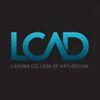
Laguna Beach College of Art and Design (LCAD) began as Laguna Beach School of Art (LBSA) in 1961. The school was inspired by “pioneering cultural ventures” of the early 1900s such as the Laguna Playhouse, the Laguna Beach Art Association, the Festival of Arts, Pageant of the Masters, and Laguna Art Museum. Today, this not-for-profit institution serves more than 700 full-time students, and it is considered one of the leading colleges of art and design in the U.S.
LCAD offers around 30 degree programs, minors, and specialized minors in areas such as animation, experimental animation, game design, illustration, and painting.
The Animation Program is the largest program at LCAD and offers BFA degrees and Minors in Animation and Experimental Animation. The BFA in Animation covers traditional animation techniques and classic art. Course highlights include CG Modeling, Character Design for Animators, Digital Skills, Directing for Animators, Layout, and Storyboarding. Students in the program will become skilled at storytelling, creating “compelling frame-by-frame performances,” says the school, and the “entire process of filmmaking from script to screen.”
Graduates of the BFA in Animation program have landed positions at major studios and networks such as Cartoon Network, Disney, DreamWorks, Fox, Industrial Light & Magic, Laika, Nickelodeon, Obsidian Entertainment, Pixar, Sony, South Park Studios, The Jim Henson Company, Titmouse, Warner Brothers Feature Animation, and more.
The BFA in Experimental Animation exposes students to “all of the digital tools, skillsets, and techniques that are the new standard in television and internet animation,” says the school. The first year of the program covers traditional animation. Students will then “branch out into purely digital approaches to narrative character animation,” along with alternate approaches to stop-motion and CG techniques. During the junior and senior years of the program, students will have the opportunity to specialize in an area of interest. The program culminates in a thesis project.
Graduates of the program will demonstrate advanced skills in 2D digital puppetry & 2D, 3D modeling and animation, character design & storyboarding for limited animation, new media authorship, paperless animation, show design & series design, and stop-motion.
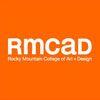
In 1963, educator and illustrator Philip J. Steele founded Rocky Mountain School of Art as a proprietary institution in the foothills of Colorado. Steele’s mission was to make the school a “community of creatives” that that would instill in all students a passion for creativity, innovation, and a desire for lifelong learning in the fine and applied arts. Today, the school has a new name—Rocky Mountain College of Art and Design (RMCAD) and it is considered one of the nation’s premier art and design institutions.
Serving more than 1,000 students, RMCAD offers 16 degree and certificate programs offered in campus/hybrid and online formats. More than 100 students are enrolled in the schools Animation Program, which offers both 2D and 3D Animation emphases.
Animation program highlights include 2D and 3D Drawing, Character Design, Line of Action, Modeling, Stop-Motion, and Storyboarding. With small class sizes, students will explore these areas and every level of animation through hands-on training led by experienced artists in the field.
The animation programs at RMCAD may be completed in four years and they lead to the BFA degree. Students will leave the programs with a polished portfolio of their work.
RMCAD animation graduates are prepared to seek positions such as 3D Artist, Animator, Character Developer, Digital Videographer, Flash Developer/Designer, New Media Designer, and many others. Alumni have landed positions at Blue Sky Studios, Industrial Light & Magic, Lola VFX, and Pixar, to name a few.

Established in 1886, Minneapolis College of Art and Design (MCAD) sits on a three-acre campus that shares a block with the Minneapolis Institute of Art—home to more than 90,000 works of art representing 5,000 years of world history. MCADs more than 800 students have access to creative spaces/classrooms, professional facilities, galleries, student housing complexes, artist studios, and a sculpture garden. Student also have access to 23 art and design degree programs and undergraduate minors. Degree programs lead to the BFA, BS, MA, or MFA.
Among the schools art and design programs is a BFA in Animation and an MFA in Visual Studies.
Two tracks are available for the BFA program—2D and 3D Animation. Both tracks require 12 credit hours of study and an internship. MCAD students have interned at the Massachusetts Museum of Art, MTV, Nickelodeon, and Walker Art Center.
An optional study abroad experience is also part of the program. Students have studied in places such as Germany, Italy, Japan, and the UK, to name a few.
Students in the BFA program will explore illustrated, stop-motion, and computer-generated approaches to animation and gain foundational skills in a variety of creative media. They will also experiment with the different roles of animator such as background animation, character development, and storyboarding. The BFA program requires 120 credit hours to graduate.
Housed in an all-MFA studio and gallery space, which includes 50 individual studios, smart classrooms, facilities for creative making, and a large gallery space, the 60 credit hour MFA in Visual Studies allows students to pursue creative work in areas such as Animation, Comic Arts, Drawing/Painting, Filmmaking, Illustration, Installation Art, and Web and Multimedia. Other program highlights include an internship, study abroad opportunities, and the Master’s Trip to NYC.
During the trip, students and alumni will visit art and design venues, artist studios, creative agencies, and more.

The College for Creative Studies (CCS) traces its roots back to 1906 when a group of local civic leaders, inspired by the English Arts and Crafts movement, formed the Detroit Society of Arts and Crafts. The Society members began teaching informal classes in basic design, drawing and woodcarving and in 1911, they opened a gallery where student and prominent modern artists could display and sell their work.
In 1926, as the Art School of the Detroit Society of Arts and Crafts, the Society became one of the first arts and crafts organizations to offer a formal, four-year program in art, with an enrollment of 280 students. Today, CCS is a private, fully accredited college that offers BFA and MFA degrees to more than 1,400 students. Among the schools largest programs is Entertainment Arts.
Here, students can earn a BFA in Entertainment Art with a Concentration in Animation that helps students develop character performance within a variety of 2D and 3D applications. The school says students will “hone skills in traditional and computer-generated (CG) animation and design and gain experience in stop-motion, motion graphics, and experimental media.”
Course highlights for the program include 2D Design, 2D Digital Animation, 3D Computer Graphics, Anatomical Figure Illustration, Animation 1, II & III, Business Practices, Computer Character Animation, Creative Visualization, Digital Techniques, Environments and Characters, Maquette Sculpture, Modeling and Texturing, Playing the Self, and Visual Culture.
All Entertainment Art students will have the opportunity to customize their curriculum by taking coursework in other concentrations including Concept Design, Digital Film and Game Design. Students will also complete a Writing Workshop and a Senior Production Studio. The optional internship is strongly encouraged.
Graduates of the CCS Animation Program work throughout the industry as 3D character artists, 3D production artists, animators, character animators, concept artists, directors, motion graphics artists, riggers, stop-motion artists, storyboard artists, VFX artists, Visualization artists, weapons artists, and many others.
CCS Graduates have been hired at major studios across the U.S. Disney ABC Television Group, DreamWorks Animation, and Sony Pictures Imageworks, to name a few.
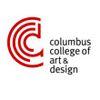
Columbus College of Art and Design (CCAD) was established in 1879 as Columbus Art School. Famous visitors to the campus during the school’s early years through the 1930s include First Lady Lucy Hayes, wife of President Rutherford B. Hayes, American artist Georgia O’Keefe, and writer Oscar Wilde. One of the oldest private art and design colleges in the United States, CCAD graduated its first class in 1885 and later added programs such as advertising, illustration, and industrial design. By 1970, CCAD had produced its first class of BFA graduates.
Today, CCAD serves more than 1,300 students enrolled in dozens of degree programs, concentrations, and minors. Programs for aspiring animators include an Animation BFA and an MFA in Visual Arts.
The Animation Program was established in 1987. Consisting of 120 credit hours of study, the program has the option to add a 15-credit hour minor such as Animation 2D, Animation 3D, Film & Video, or Illustration. Per the school, students in the program will “dive right into cutting-edge animation techniques and learn 2D, 3D, and experimental styles, as well as game art, motion graphics, digital modeling, virtual reality, and more.” Program highlights include access to industry-standard facilities such as the Cloyd Family Animation Center, support of peers through the Animation Student Collective, and guidance from creative faculty who are experts in the field.
Graduates of the program work in a variety of positions and fields. Just a few include augmented reality designer, character animator for feature films, game artist, motion designer, and television animator. Recent employers include Cartoon Network, DreamWorks Animation, Electronic Arts, Laika, Nickelodeon Animation Studio, Phosphor Games, Pixar, Riot Games, Sony Pictures Animation, and Walt Disney Animation Studios.
In the MFA in Visual Studies program, students have executed individual projects from animation and video to interactive design and illustration. The school says that the program “stresses studio mastery, individual scholarship, and real-world practices such as organization, communication, clarity of thought, leadership, and entrepreneurial skills.” The school has built an environment to fuel collaboration, experimentation, and creation as students’ work on their individual projects.
MFA students work in a personal studio that can be accessed 24/7. The 13,700-square-foot graduate facility also houses faculty offices, a lounge, and an exhibition space. Students also have access to CCAD’s library, plus many labs, shops, the Tad Jeffrey FabLab, computer complexes, darkrooms, studios, and digital printing facilities.
Other MFA program highlights include visiting guest artists, designers, and scholars each semester, who teach workshops and seminars, engage in one-on-one mentoring with students, and lecture as part of CCAD’s visiting scholar’s series, and participation in an off-campus experience. Options include individual mentoring with an artist or professional, foreign study, or an internship with a nonprofit or business. Experiences have taken students to places such as Chicago, Honduras, Ireland, New York, Oregon, and Seattle.
Students in both the BFA and MFA programs may participate in CCAD’s International Exchange Program, which highlights study at China Academy of Art, Hangzhou, China; Universidad Mayor, Santiago, Chile; Xi’an Fine Arts Academy, Xi’an, China, and Northumbria, Newcastle, England. Students may also study at CCAD-approved programs at Studio Art Centers, Florence, Italy, and University of Arts London, London.

Founded in 1876, University of the Arts (UArts) was formed by the merging of two century-old institutions: Philadelphia College of the Performing Arts and Philadelphia College of Art. In 1987, after the school was granted university status, it became the largest institution of its kind in the nation. Today, UArts is the “the only arts school in America that makes it possible to work and collaborate across traditional boundaries,” says the school.
University of the Arts serves approximately 1,800 students enrolled in more than 40 undergraduate and graduate programs at the University's campus located on Avenue of the Arts. Twenty-three minors are also available and open to all students. This means, animators can study guitar, creative writers can take classes in illustration, dancers can take sculpting classes, and industrial designers can minor in ceramics.
Programs are offered through the Schools of Art, Dance, Design, Film, Music, and Theater. The School of Film, which enrolls 240 students, offers BFAs in Animation and Film + Animation, and a Minor in Animation. The BFA program “supports traditional hand-drawn, 3D computer, stop-motion and any animation techniques that can be imagined or explored.” Students in the program will explore the variety of techniques available to the current animator, hone traditional skills, and learn how to tell engaging stories as well as create memorable characters, and bring their concepts to life.
Besides taking courses such as 2D Computer Character Animation, Drawn Character Animation, Screenwriting, Special Effects Compositing, and Storyboarding, BFA students will create Junior and Senior Animation Pieces, an Animation Thesis, and an Internship. Organizations that have hosted interns include Augenblick Studios, Sesame Workshop, and Stretch Films Inc., to name a few.
To create animation pieces, students will have access to UArts’ production and technology spaces, such as the 5,600-square-foot Center for Immersive Media (CIM), animation and film studios, computer labs, and two stop-motion studios, among other “cutting-edge” spaces.
The BFA in Film + Animation “allows students to explore the possibilities of both film and animation.” Students in the program will study “film and animation techniques, explore various genres and styles, and create a capstone project that combines film and animation in innovative way.” Other program highlights include hands-on instruction by “award-winning, professional filmmakers and animators” whose work has aired on Cartoon Network, HBO, Netflix, Nickelodeon, and many others, production workshops, lectures, screenings and critiques, and internship and study abroad opportunities.
In addition to study abroad experiences, international opportunities include festivals and workshops in countries such as Canada, France, and South Korea.
UArts animation alumni have worked on animated television series, commercials, major special effects films, and video games in a variety of roles from director and animator to storyboard artist and editor, and many other positions. Graduates have landed both salaried and freelance positions at places such as DreamWorks, Google, HBO, Netflix, SNL, Sony Computer Entertainment, and Walt Disney Animation Studios.

The Digital Animation & Visual Effects School (DAVE School) was founded in 2000 by two industry executives looking to create “career ready” artists with practical animation skills. When it opened, the school says that it offered “specialized training in Visual Effects with extensive practice under industry level supervision.” The DAVE School introduced fully online bachelor’s degree programs in Motion Graphics in 2017, along with on-campus bachelor’s degrees in Visual Effects and Game Production. Diploma programs in Game Production and Visual Effects are also available.
Diploma programs take 12 months to complete and bachelor’s degree programs may be completed in just 36 months. All programs offer the opportunity to learn animation through required and elective coursework. Highlights include Advanced Color Theory & Design, Digital Illustration, Digital Modeling and Sculpting, Dynamics and Visual Effects for Motion Graphics, Emerging VFX Tech & Pipelines, Fundamentals of Computer Animation, Motion Graphics Production I & II, and VFX Compositing.
The DAVE School is located in an 18,000 square foot facility situated on the backlot of Universal Studios Florida, Soundstage 25, providing unlimited access to learning and interactive labs, a dedicated Virtual and Real-Time production stage, a Vicon motion capture system, and 3D printing and VR/AR labs.
DAVE school graduates and instructors have worked on major productions such as Avengers: Age of Ultron, Captain America, Game of Thrones, Godzilla, Green Lantern, Jurassic World, Rogue One: A Star Wars Story, Terminator Genisys, The Hobbit, The Hunger Games, and many others.

Drexel University was established in 1891 as Drexel Institute of Art, Science and Industry by Philadelphia financier and philanthropist Anthony J. Drexel. In 1919, the University introduced a cooperative education program, which became one of the first models of its kind in the U.S. Today, Drexel’s cooperative education program remains the oldest, largest, and best-known program in the nation and it is a degree requirement for most majors. This enables undergraduate students, including animation students, to balance classroom theory with practical, hands-on experience prior to graduation. Students have had experiences in Ghana, Greece, Hong Kong, London, Spain, and more.
Drexel University has a total enrollment of 24,205 students. Over 200 degree programs are offered in 15 colleges and schools, including the Westphal College of Media Arts & Design, which houses the Digital Media Department (DMD). Here, aspiring animators can earn a BS or a Minor in Animation & Visual Effects, as well as MS and PhD degrees in Digital Media.
The BS in Animation & Visual Effects gives students the “technological, story-telling and design skills to succeed as animators and visual effects artists in the highly competitive entertainment and design worlds,” says the school. “Over the course of their education in the program, students will pursue a foundation of design and technology by taking core courses in all aspects of digital media while delving into coursework covering many areas of specialization.”
The program consists of 51 credits of core courses, 45 hours of general education courses, 27 elective credits, 24 credit hours of art and art history requirements, 18 credits of animation requirements, 15 credits in media and computer science, and six credits of animation electives.
The program’s six-month co-op allows students to “learn the underlying principles of animation along with industry-standard software technology. The entire creative pipeline from storyboarding through modeling and animation is covered in-depth, allowing students to experience all aspects of production.” Animation & Visual Effects students have held co-op positions with employers such as 3FX Medical Animations, AlchemyX, Brooklyn Digital Foundry, Cartoon Network, Environmental Tectonics, ESM Productions, FuseFX, Mediakraft TV, SideFX, Sony Studios, Stargate Studios, and many others.
BS students interested in completing both the BS and an advanced degree have the option to enter the accelerated BSMS degree in Digital Media or the BS and the new MS in Biomedicine and Digital Media (MS BMDM) after completing at least 90 undergraduate credits. The MS BMDM The Master of Science in Biomedicine and Digital Media program (BMDM) intersects animation, entrepreneurship, interactive digital art design, science, and technology.
This hybrid program is offered in the College of Medicine and it offers a number of elective course options, a flexible (experiential learning) internship, and a customizable plan of study. A thesis is not required.
The DMD’s two-year MS in Digital Media is a hybrid program that offers comprehensive studies in Advanced Digital Design including 3D Modeling, Animation, Gaming and Digital Media History, Interactivity, and Theory and Methods. The curriculum for the two-year program “offers a mix of academic coursework and project-related activities. Projects consist of funded grant research opportunities, industry-sponsored projects and independent, student-generated and faculty-approved projects.”
The PhD in Digital Media “focuses on translational research in digital media within an experiential learning environment. It studies the application of digital media towards solving research problems in various disciplines including but not limited to engineering, education, cultural heritage, health or business. This doctoral program is built on a fundamentally interdisciplinary course structure and emphasizes an iterative and design based research philosophy.”
PhD students have the same project opportunities as MS students. Past projects for the programs have included Brain-Computer Interfaces (BCI) for video games, theme park ride and animation design, interactive online non-linear narrative comics, advanced animation production techniques, a multi-media interactive dance performance with body tracking, and multi-touch games for teaching middle-school children.
Graduates of the Westphal Animation and Digital Media programs at Drexel University have landed positions at leading companies such as Disney, DreamWorks, Microsoft XBOX, NCSoft Corp., Pixar, and many others.
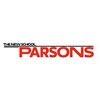
The New School was founded in 1896 by American Impressionist William Merritt Chase. Back then, the school was known as The Chase School. In 1904, Arts Educator Frank Alvah Parsons joined the school, later becoming its sole director. Between 1904 and 1910, parsons launched a Costume Design Program, Interior Decoration, and Advertising.
Today, known as The New School/Parsons, this art and design college serves 5,100 students enrolled in 130 degree and diploma programs across five schools including the Schools of Art and Design History and Theory; Art, Media, and Technology (AMT); Constructed Environments; Design Strategies, and the School of Fashion.
Programs for animators are offered through the School of Art, Media, and Technology. Options include BFA and MFA degrees in Design & Technology. Pathways include Creative Technology and Game Design. Minors in Immersive Storytelling and Comics and Graphic Nature are also available, as well as a related program—the BFA in Art, Media, and Technology, offered at Parsons Paris (est. 1921).
The BFA in Design & Technology is a 120 credit hour STEM-designated program that takes four years to complete, full-time. The BFA Creative Technology pathway “focuses on methods of combining physical computing, creative coding, user experience, responsive environment, and immersion technology for innovative design solutions,” says the school.
The Game Design pathway “emphasizes the aesthetic aspects of designing games.” It provides a set of tools that grows along with students’ skills and provides them with an understanding of the game design process, from brainstorming to game publication.
Course highlights for the pathways include Core Lab Environments, Core Studio Environments, Design Studies, Drawing/Imaging, Sustainable Systems, Space/Materiality, and Time. Students in both pathways will have the opportunity to visit and engage in projects with industry leaders and organizations such as Apple, Atari, Eyebeam Art & Technology Center, MTV, Nickelodeon, Rockwell Interaction Lab, Siemens, and UNESCO. Students also have access to the university’s extensive libraries, galleries, and state-of-the-art facilities, which allows them to engage their creativity and showcase their work.
Graduates leave the program prepared for careers in advertising, animation, film, game design, graphic arts, hardware engineering, motion graphics, software design, and virtual reality and immersion experience design.
Parsons full-residency, two-year MFA program is a STEM-designated, studio based degree with areas of practice including critical design, data visualization, digital fabrication, game design, interaction design, new media art, physical computing, and wearable technology. Through Collaboration Studio courses, students in this 60 credit hour program have the opportunity to work with fellow graduate students in related programs including Communication Design, Data Visualization, and Transdisciplinary Design.
MFA students also have opportunities to work on real-world projects with external partners. Past partners include Apple, Eyebeam, gameLab, Human Rights Watch, Intel, Mozilla, NASA, Ralph Lauren, Red Bull, the Red Cross, Samsung, the Metropolitan Museum of Art, the U.S. Holocaust Museum, and the Whitney Museum of American Art,
MFA graduates go on to establish careers in 2D and 3D animation, digital filmmaking, game design, interaction design, mobile and application design, motion graphics, new media art, UI and UX design and web design.
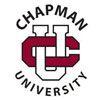
Chapman University was founded in 1861 as Hesperian College in Woodland, California. The school serves around 10,000 students from 49 states, two territories, and 82 countries. Some 200 programs are offered in eleven different colleges and schools.
Dodge College of Film & Media Arts offers a BFA in Animation and Visual Effects with a focus in 2D or 3D Animation or Visual Effects. This hands-on program is divided into two parts. The first two years are devoted to the fundamental artistic and technical skills that provide the foundation for the student’s development as an animation or VFX artist. During their junior and senior years, students will focus on their chosen area of specialization and the development and production of the senior thesis project.
Students at Dodge College will also connect with the industry via guest lectures, special events, career panels, resident filmmakers, and Chapman Filmed Entertainment—the school’s in-house production company. Dodge students also have access to the state-of-the-art Digital Media Arts Center (DMAC), which was inspired by the creative spaces at Disney, Google, Microsoft, and Pixar.
The DMAC provides “24/7 access to an art studio, an animation lab with both traditional animation pegged drawing discs and digital Cintiq tablets, a VFX lab with dual monitors and a 4K workflow, individual digital suites with specialized 3D and sound gear,” says the school. The spaces feature the “latest industry standard software such as Adobe Creative Suites, Maya, 3DS Max, and an Xsens motion capture suit and software.”
Through field trips to, and internships with major animation, gaming, and VFX studios, students in the program will stay connected with the industry. Students have explored or interned with studios such as Blizzard, Blur, DreamWorks and Pixar. In addition, “major industry players and professionals such as Joyce Cox (The Jungle Book), Chris Buck (Frozen), Don Hahn (Lion King, Beauty and the Beast), Randy Cook (Lord of the Rings), Pete Docter (Inside Out), Rob Liefeld (Deadpool), and many more frequently visit campus.”
Another benefit of the Animation program at Chapman’s Dodge College is the International Program. In the past academic year, Dodge College students traveled abroad to 10 countries, including Laos, Malawi, Ireland, and South Korea. In recent years, students have traveled to more than six continents and 20 countries including Asia: India, Japan, Singapore, South Korea, Taiwan; Europe: England, France, Iceland, Italy; Africa: Botswana, Burkina Faso, Cameroon, Ghana, Mozambique, Uganda, Tanzania; South America: Peru; Australia, New Zealand and Cuba, as well as several cities in North America.

Woodbury University was founded in 1884 as Woodbury College by educator and entrepreneur F.C. Woodbury. One of the oldest institutions of higher education in Southern California, Woodbury University was committed to diversity, so the school’s first class was made up nearly equally of males and females. Today, the commitment to diversity remains one of the school’s core principles. The current male-female ratio is 49% male, 51% female.
Woodbury serves nearly 1,200 students on campuses in Los Angeles/Burbank and San Diego. The school also has a Gallery called “WUHO Gallery” in Hollywood. The school offers 26 practice-based, fully accredited professional and liberal arts undergraduate and graduate majors through four colleges and schools including the College of Liberal Arts and the Schools of Architecture, Business, and Media, Culture & Design.
The School of Media, Culture & Design houses the Animation BFA Program. The goal of the program is to “help students develop their creative voices and prepare them for a successful career in professional animation production,” says the school. Coursework covers 2D Animation, 3D Animation, and Stop-Motion.
2D animation production courses emphasize the traditional Principles of Animation and acting in animation, production design, storyboarding, and both paperless and puppet pipelines, “required in the professional animation industry.” The programs 3D animation production courses “emphasize the art of combining sculpted models, surfacing for color and texture, lighting for storytelling, rigging for posing, animation as acting and rendering, and compositing to create believable visual stories.”
Stop-motion production coursework emphasizes animating with a variety of stop-motion approaches such as cut-out and rapid prototyping of facial expressions with 3D printing. It also emphasizes set building and puppet making with armatures. Students will also learn visual and cinematic language through the production of personal projects.
Because Woodbury is highly interdisciplinary, animation students have the opportunity to study in other areas such as Filmmaking, Game Art & Design or Media. Students will have access to the Animation Club, which hosts events, speakers, and exhibitions, and they will gain experience through a mandatory internship.
Past internship’s include positions at Acme Filmworks, Bix Pix Entertainment, Blur Studios, Cartoon Network, DreamWorks, Hasbro Studios, Nickelodeon, Renegade Animation, Walt Disney Animation, Walt Disney Imagineering, Titmouse Studios, and Warner Bros., to name a few.

Established in 1885, Kansas City Art Institute (KCAI) started as a Sketch Club formed by a group of “enterprising” Kansas Citians. Today, KCAI is an accredited four-year college of art and design known for training famous artists of all kinds from Dennis Hopper to Walt Disney.
KCAI serves more than 700 students, with a 16,000-square-foot facility dedicated solely to incoming freshmen. Thirteen majors are available in 15 program areas through several departments. The Department of Converging Media houses the school’s animation program, which leads to a BFA. Double Majors in Art History and Animation and Creative Writing and Animation are also available.
The Animation BFA highlights intensive instruction in classical, experimental and computer animation. Students in the program work in technologically integrated classrooms and studios to produce a significant personal work. The Department of Converging Media houses Filmmaking, Interactive Arts, and Photography, so animation students also work in an environment that facilitates creativity and cross-disciplinary approaches to image making.
The BFA curriculum include a suite of classes that emphasizes different aspects of the creative process including animation principles, concept modeling, history, production methods, and theory & technique. Course highlights include Contemporary Animation History, Digital Methods, Explorations in Animation, Ideas in Motion, Principals of Animation, Professional Practice (where students interact with renowned visiting artists, scholars, and professionals), and Visual Communication.
Senior animation students are offered a six-credit studio each semester where they will design, manage, and fully produce an animated work. “This year-long project prepares students to confidently enter the field with experience, professional practice, and a representative portfolio/body of work,” says the school. Experience is also gained through internship opportunities at major studios across the country.
Graduates of the program have gone on to work in studios and production houses such as Bazillion Pictures, Digital Domain, Disney, Hallmark, Nickelodeon, Plympton Studios, ShadowMachine, Stoopid Buddies, Titmouse, Warner Brothers, and many others. Additionally, many graduates have gone on to pursue advanced degrees at top colleges like Cal Arts, SVA, UCLA, and UMKC.

Established in 1882, Cleveland Institute of Art (CIA) is an independent college of art and design that serves approximately 600 students enrolled in 15 majors in Art, Craft, Design, and Digital Media. A unique component of the programs at CIA is students enter their major as a sophomore, allowing them three full years of building skills and mastering techniques instead of one or two.
For aspiring animators, CIA offers a BFA in Animation that “teaches students how to produce professional content to support their vision, with an emphasis on storytelling,” says the school.
Students will work their way through courses such as 2D and 3D Animation, Acting, Human and Animal Anatomy, Motion Graphics, Storyboarding & Sequential Art, and many others. Students also have the option to focus on an area of expertise and use open electives to study outside of the program and collaborate with other departments based on specific interests.
Coursework for the program is supported by field trips to the zoo and natural history museum for research and inspiration as well as working on independent and collaborative projects. Through CIA’s Engaged Practice, students also have opportunities to learn through experience by working on real-world projects with external partners or clients, or in the public sphere—all before graduation.
An additional benefit of the program is mentoring by instructors who have worked for companies such as American Greetings, DreamWorks, Hasbro, Illumination, Sony Animation, Walt Disney Feature Animation, Warner Bros., and many others. Combined, the department professors have over 20 feature film credits, 200 TV episodes, 100 TV series, 300 digital productions, and expertise in nearly every aspect of animated production.
Graduates of the CIA program are prepared to seek positions such as 3D Character Animator, Animator, Concept Artist, Game Designer, Independent Filmmaker, and Storyboard Artist. Alumni work on feature films, TV series and games, and for the automotive, communications, medical, music, and sports industries.
Cogswell University of Silicon Valley (USV) was founded in 1887 as Cogswell College. When it opened, the school became the first technical training institution in the West. Serving more than 500 students, USV offers cross-disciplinary programs and project studios that prepare students for careers in creative technology.
Options for animators are offered through the schools Department of Digital Art & Animation (DAA). Pathways include a BA in DAA with four concentrations including 3D Animation, 3D Modeling, Entertainment Design, and Technical Art. All concentrations allow students to “experience what it’s like being in the full animation and VFX pipeline,” says the school.
Core courses for the BA in DAA Program include 2D Design, Color Theory, Figure Drawing, Perspective and Rendering, Principles of Management, Sculpture, Sketching, and Storyboarding. The remaining courses will depend on the concentration.
Course highlights for the 3D Animation Concentration include 2D and 3D Animation, Acting, Character Rigging, Drawing Animation, Media Works for Animation Students, Scripting: Python, and Storyboarding. Students will also complete Animated Film Production, where they will work in teams to create a shore animated film.
3D Modeling students will take courses such as Character Rigging and Introduction to 3D Modeling, and, while course highlights for Entertainment Design include Perspective & Rendering and Texturing. Entertainment Design students will also take a portfolio course that will prepare them to create a finished portfolio that demonstrates their abilities in Entertainment Design.
Graduates of the Cogswell Digital Art & Animation Program have landed positions at major studios and companies such as Activision Blizzard, Cartoon Network, Disney, DreamWorks, and Pixar. Alumni have developed characters for blockbuster animated films like Big Hero 6, Deadpool and Frozen.

Founded in 1909, Pacific Northwest College of Art (PNCA) says it is a “a center for communities of artists, designers, and scholars, presenting more free public programs and exhibitions in a given year than any other arts institution in the city.” Serving nearly 650 students, this fine arts and design college offers 12 undergraduate majors in art and design, eight graduate degrees, one Post-Baccalaureate program, and eight minors.
For aspiring animators, the school offers an Animated Arts Program that combines fine art practices and digital technologies. Leading to the BFA, the program covers principles of animation, experimentation with a wide variety of media, production methods, and narrative strategies.
Course highlights for the program include 3D Design, Animated Installation, Animated Short Film, Animation I: Materials, Methods & Motion, Animation II: Hybrid Moving Image, Beginning Sound, Beginning Video, Narrative Strategies, Time Arts, Visual Elements Digital Tool, and Writing in Context.
Students have the opportunity to select a number of studio electives to develop skills in a range of areas, and all students will complete Professional Practices and the Media Arts Thesis. Other program highlights include opportunities to produce professional work for education purposes, festivals, festivals, and screening and performance.
Graduates of PNCA’s Animated Arts Program have gone on to work for top animation studios, attend prestigious graduate schools, and have their work featured in international film festivals.
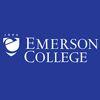
Founded in 1880, Emerson College is located in the heart of Boston’s Theater District. Focused on communication and the arts in a liberal arts context, this independent, nondenominational college serves nearly 4,500 students enrolled in dozens of programs leading to a BA, BS, BFA, MS, MA, or MFA degree. More than 30 minors designed to augment and enhance students’ primary course of study are also available.
The School of the Arts, Department of Visual & Media Arts (VMA) offers both BA and BFA degrees in Media Arts Production. The VMA faculty has created possible plans of study specifically designed to develop expertise in areas such as Animation and Motion Media, Filmmaking, Interactive Media and Games, Post-Production, Writing for Film and Television, and a number of other areas.
Course highlights for animators include Computer Animation, Drawing for Character Design, Film Production, Foundations in Visual and Media Arts Production, Game Design, Narrative Drama, and Writing for Short Subject.
The BA has an optional capstone that allows students to work on an advanced production project. The student will leave the program with either a project, reel or portfolio. The BFA program “encourages innovative exploration of voice, form, culture, and genre.” Students in this program will pursue a yearlong course of work on a thesis-level project.
Graduates of Emerson’s Department of VMA have found employment at places such as Bunim-Murray Productions, Digital Domain, Fox Searchlight, Hallmark Channel, MAD TV, MGM Studios, SCG Productions, Soup2Nuts, World Wide Pants, and many others.
